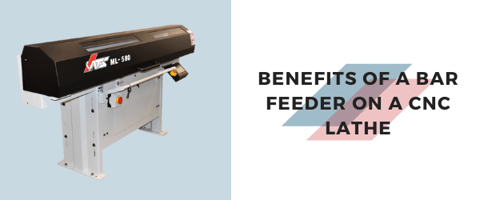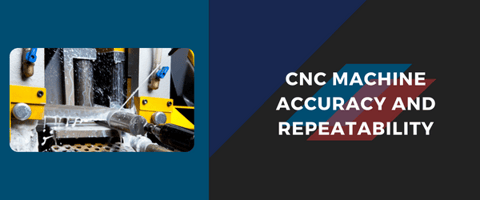Upgrading your machine shop doesn’t always require purchasing brand-new CNC machines. In fact, with...
CNC Coolant: The Role and Maintenance Strategies for Optimal Performance
Discover the importance of CNC coolant and learn effective strategies to prevent degradation for optimal performance in CNC machining.
Coolant plays a crucial role in CNC machining by providing lubrication and cooling to the cutting tools and workpiece. It helps reduce friction and dissipate heat generated during the machining process, leading to tool wear and workpiece damage. Coolant also helps flush away chips and debris, ensuring a clean and smooth cutting operation. Inadequate cooling can result in thermal expansion of the workpiece, affecting dimensional accuracy and causing distortion.
It is important to understand the role of coolant and the importance of maintaining fluids to avoid degradation. As the coolant deteriorates, its ability to provide effective lubrication and cooling diminishes.
The primary causes of fluid degradation include:
- Accumulation of contaminants: The accumulation of contaminants, such as metal chips, fines, and tramp oils can reduce the effectiveness of the coolant and result in poor chip evacuation, causing chip buildup and clogging of the cutting tool. This can result in decreased tool life, poor machining performance, increased downtime for tool changes, and reduced productivity.
- Bacterial Growth: The growth of bacteria and fungi in the coolant, which can thrive in the warm and moist environment created by the coolant can lead to foul odors, slime formation, and decreased stability of the coolant and health hazards for machine operators.
- Excessive Temperatures: Exposure to high temperatures can lead to thermal breakdown of the fluid, reducing its effectiveness.
- Oxidation: Exposure to air and improper storage can lead to oxidation, and evaporation causing the coolant to lose its lubricating and cooling properties.
It is important to identify and address common causes of coolant degradation to ensure optimal performance.
Effective strategies for preserving CNC coolant are:
- Regular Monitoring and Testing: Regular monitoring and testing of coolant is essential for identifying potential issues before they affect machining performance. Conduct routine checks for factors such as pH levels, concentration, and fluid clarity. Regular microbial testing should be conducted to detect the presence of bacteria and fungi in the coolant. If microbial growth is detected, appropriate biocides or additives should be used to control the growth and maintain coolant stability. Implementing a systematic testing schedule helps in the early detection of problems and allows for timely corrective actions.
- Proper Fluid Concentration: Maintaining the correct concentration of coolant and cutting fluids is crucial for effective performance. Deviations from the recommended concentration can lead to poor lubrication, reduced cooling efficiency, and increased tool wear. Regularly measure and adjust the concentration levels to ensure they align with the manufacturer's recommendations.
- Filtration Systems: Implementing effective filtration systems is key to removing contaminants such as chips, debris, and fine particles from the coolant. Several types of filtration methods are employed in CNC machining to achieve this goal. Some common types of filtration are magnetic filters, centrifugal separators, gravity bed filters, bag filters, cartridge filters, cyclonic filters, ultrafiltration systems, and settling tanks. Regularly clean or replace filters as part of routine maintenance.
- Sludge Removal: Sludge can accumulate in coolant lines, filters, and other components of the coolant system, leading to clogs and reduced flow rates. Implementing a chip and sludge vacuum can help prevent these clogs, ensuring uninterrupted coolant flow throughout the system.
- Use Skimming Techniques: If you want to remove contaminants from the coolant, you can use skimming techniques. This involves using a device like a belt skimmer that draws the contaminated coolant from the surface and traps it. The coolant is then filtered and returned to the system.
- Temperature Control: Maintaining the appropriate temperature of coolant and cutting fluids is vital for optimal machining conditions. Use temperature control systems such as coolant chillers to keep the fluid within the recommended operating range, preventing thermal-related issues and ensuring consistent performance.
- Proactive Rust and Corrosion Prevention: CNC machines are often made of metal components that are susceptible to rust and corrosion. Coolant and cutting fluids should include corrosion inhibitors to protect the machine and tools. Regularly check for signs of rust and corrosion and take measures to address any issues promptly.
- Effective Biocide Treatment: Coolant and cutting fluids can become a breeding ground for bacteria and fungi. Incorporating effective biocide treatments helps control microbial growth, ensuring a clean and safe working environment. Follow the manufacturer's recommendations for biocide usage and monitor microbial levels regularly.
- Proper Storage: When not in use, store coolant and cutting fluids properly to prevent contamination and evaporation. Use sealed containers and keep fluids away from direct sunlight and extreme temperatures. Adequate storage practices contribute to the longevity and effectiveness of the fluids.
Preserving and maintaining coolant is essential for achieving optimal CNC machining performance. By implementing a proactive maintenance routine, including regular monitoring, proper concentration management, filtration, temperature control, rust prevention, biocide treatment, and proper storage, manufacturers can extend the life of these fluids, reduce operational costs, and ensure consistent high-quality machining results.
.png)



